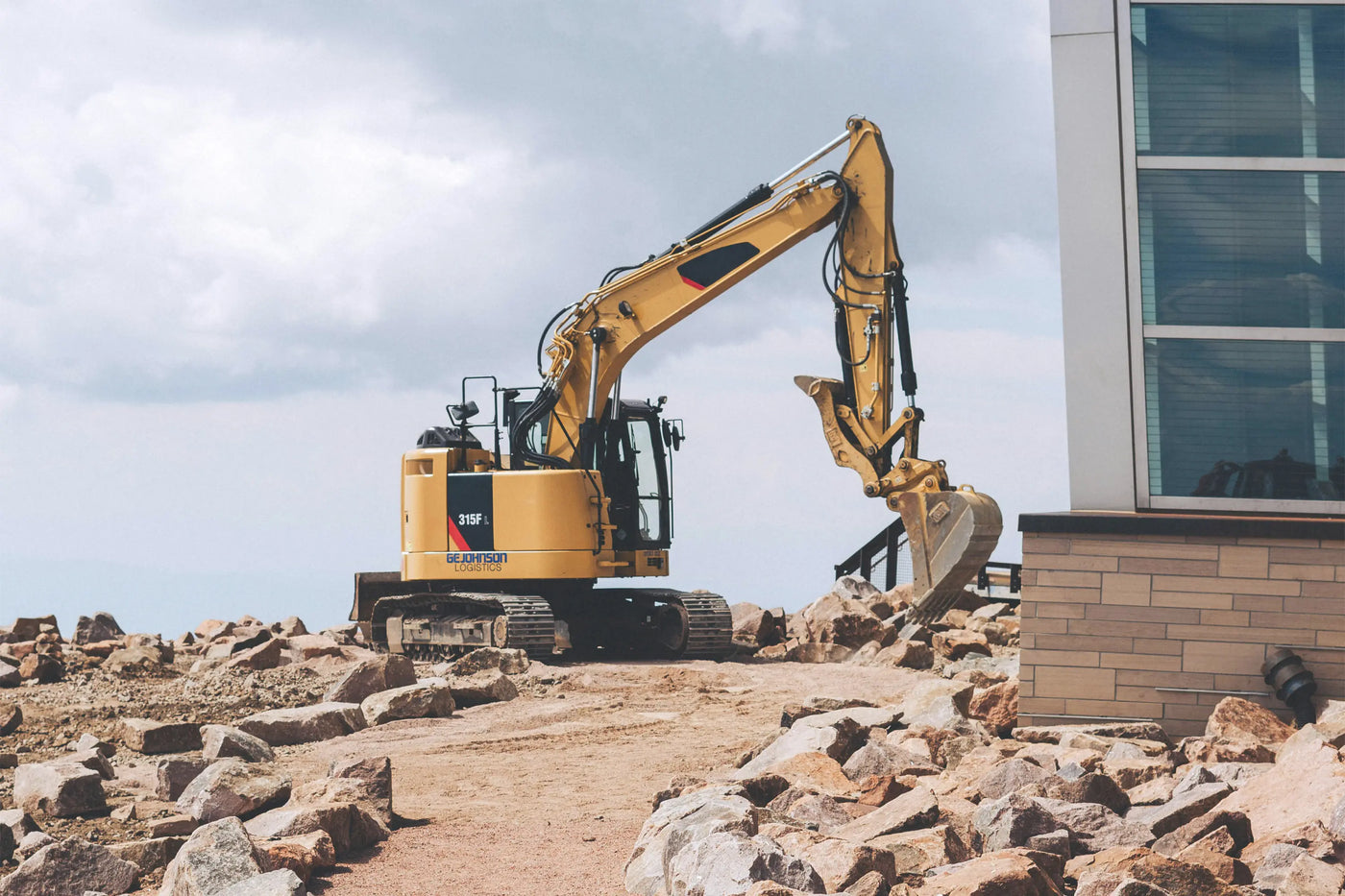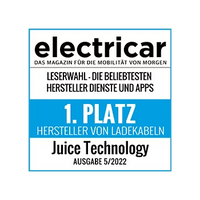The path to an emission-free future
Construction sites without noise, exhaust fumes, and the smell of diesel – what still sounds visionary is already a reality in Scandinavia and Switzerland. Electric construction machinery is fundamentally changing the industry.
Construction sites in transition – why electrification is starting now
While electromobility is becoming increasingly established in road traffic, it is still in its infancy on construction sites. But the signs point to change: cities like Oslo, Zurich, and Lucerne are pushing ahead with pilot projects for the electrification of construction sites. The reason is obvious: construction sites are among the largest emitters of CO₂, particulate matter, and noise.
In Oslo, for example, they cause around 60,000 tons of greenhouse gases annually – from machinery and transport vehicles alone. The pressure on the construction industry is growing: climate targets, stricter air pollution regulations, and sustainability strategies are making the transition unavoidable.
From pilot construction site to practical application
Scandinavia as a pioneering region
In Norway, Denmark, and Finland, numerous construction sites are already fully electrified. Oslo and Trondheim are considered pioneers: since 2025, all urban construction sites there have been emission-free. All machines – from asphalt milling machines, vibratory plates, and rammers to wheel loaders and excavators, as well as asphalt pavers, cement mixers, and material transport trucks – are electrically powered. The result: significantly lower emissions, less noise, and improved working conditions.
Switzerland is following suit
Electric construction sites are also becoming increasingly common in Switzerland. The city of Lucerne, together with the Lucerne University of Applied Sciences and Arts, tested the largest variety of electric construction machinery in the country to date. From the end of October to mid-November 2025, electric excavators, rollers, and dump trucks worked together on a construction site in front of the train station.
The feedback was positive: machine operators reported that the operation was hardly different from conventional devices – only the power output was not yet fully optimized.
Zurich aims to operate all municipal construction sites greenhouse gas-free by 2035, while Basel plans to become completely climate-neutral by 2037. Initial experience shows that the transition is technically feasible, but hurdles remain regarding the costs and availability of machinery, as well as the provision of charging infrastructure.
Advantages of electric construction machinery
Cleaner air
Electric construction sites produce no exhaust fumes and less fine dust – an advantage for work in enclosed or poorly ventilated environments such as underground car parks or trenches.
In Zurich, for example, the use of electric construction vehicles and machinery could reduce annual emissions in building construction by around ten percent. If green electricity is used, CO₂ emissions can even be reduced by up to 96 percent compared to diesel machines.
Low-noise working environment
Electric construction machinery is significantly quieter: TÜV Süd has recorded noise reductions of up to 38% at pilot construction sites of the Baden-Württemberg distribution network operator Netze BW, and even 99.9% for electric trucks. This not only improves the quality of life for residents, but also communication and safety on the construction site. Where employees can communicate without engine noise, the risk of accidents decreases noticeably.
Reduced maintenance and longer lifespan
Electric motors have fewer moving parts than combustion engines and require virtually no maintenance. Manufacturers state that electric motors last up to 50 percent longer than conventional ones. Downtime is also reduced, as neither oil changes nor emissions testing are necessary. Electric construction sites are therefore not only more environmentally friendly, but also more economical in the long run.

The biggest challenges
High acquisition costs
While most construction machines and the first transport vehicles are now available in electric versions, they are still significantly more expensive than their conventional counterparts. Depending on the type, an electric excavator costs two to three times as much as a diesel-powered model. Added to this is limited availability: the market is small, and rental and replacement equipment is scarce. Many construction companies are therefore hesitant to invest as long as subsidy programs are lacking and clients do not set clear CO₂ targets. Countries like Norway and Finland demonstrate that targeted incentives – such as tax breaks or subsidies – can considerably accelerate the transition.
Energy demand in winter
On year-round construction sites, ambient temperature is a significant factor. Experience from Scandinavia shows that the efficiency of electrically powered equipment in summer hardly differs from that of diesel machines. However, cold temperatures can reduce battery capacity by up to half. Furthermore, batteries must be preheated before charging – an additional energy and time expenditure. While these effects will diminish with technological advancements, proactive charging planning is currently essential.
Power supply on the construction site
Construction sites are dynamic environments: machines frequently change location, and power outlets are rarely where they are needed. Fixed charging points, to which excavators or wheel loaders have to travel long distances, are neither practical nor sensible, especially since their energy consumption is significantly higher while driving than while working. At the same time, large machines must be able to be recharged quickly. To ensure work can proceed with as few interruptions as possible, the lunch break is often the only time available for charging on construction sites. Unlike an electric car, an 11 kW charging capacity is insufficient in this case – high-performance solutions are required that are also robust and flexible.
Mobile charging infrastructure as a key technology
This is where mobile charging stations like the JUICE BOOSTER 2 come into play. With a charging capacity of up to 22 kW, a robust design, and extension cables with a working radius of up to 25 meters, it is perfectly suited for changing locations. Dustproof, waterproof, and drive-over resistant, it meets the exact requirements of harsh construction site conditions. Connected to a construction site power outlet, it provides the flexibility needed on construction sites: machines and vehicles can charge wherever they are in use. Even heavier equipment such as tracked excavators or transport vehicles can be quickly made ready for use again – without any complicated mains connections.
Gradual electrification as a sensible approach
A complete switch to electric construction sites takes time. The market is still in the testing phase: the range of models is limited, and the purchase costs are high. However, even partial electrification brings noticeable advantages: fewer emissions, lower operating costs, and a significantly more pleasant working environment.
Companies that begin gaining experience with electric machinery and mobile charging infrastructure today are getting a decisive advantage: They benefit from lower operating costs, positive public perception, and early adaptation to future environmental regulations. The electric construction site makes sense both technologically and ecologically. It's quieter, cleaner, more efficient, and more economical. And it's already happening.
Fact check: Why electrical construction sites make sense
- Up to 96% less CO₂ emissions when using green electricity
- 38% less noise from construction machinery
- Electric motors have a 50% longer lifespan compared to combustion engine models.
- No local exhaust fumes and less particulate matter
- Significantly lower maintenance costs
Read more here
- A mobile charging solution that enables rapid scalability on construction sites.
Morgan Sindall Infrastructure relies on Juice Technology to accelerate fleet electrification and optimize the transition | Juice Technology AG
British construction and infrastructure specialist Morgan Sindall Infrastructure is using the JUICE BOOSTER 2 to accelerate the electrification of around 1,150 vehicles in its construction site fleet. - Tested and found to be safe
JUICE BOOSTER 2 – first mobile 22 kW charging station with TÜV SÜD certification according to current standards | Juice Technology AG
The JUICE BOOSTER 2 is the first in its class to be TÜV-certified – a true milestone in terms of compliance with standards. - Showing presence with impact
Juice at REXEL Expo 2024 | Juice Technology AG
At REXEL Expo 2024, Juice Technology AG presented its portfolio in the area of “Sustainable Solutions” – a clear signal to decision-makers in electromobility and charging infrastructure. - They belong in the product range
Wallbox JUICE BOOSTER now available from FEGA & Schmitt | Juice Technology AG
Electrical wholesaler FEGA & Schmitt offers mobile wallboxes from Juice, giving electrical installers access to flexible charging solutions for changing locations. - Swiss distribution access for installers
Otto Fischer and Juice join forces | Juice Technology AG
Otto Fischer AG has Juice products, including JUICE BOOSTER 2, in its ProfShop portfolio – an important step towards providing installation companies with mobile charging infrastructure across the board.
JUICE BOOSTER 2 – robust, flexible & safe
JUICE BOOSTER 2 | Juice Technology AG
The mobile wallbox that can handle anything, even on the go.













